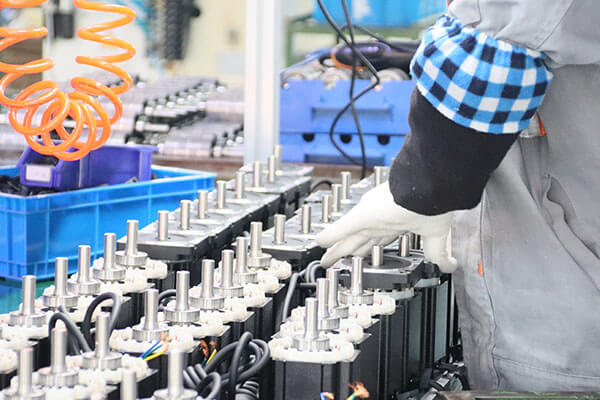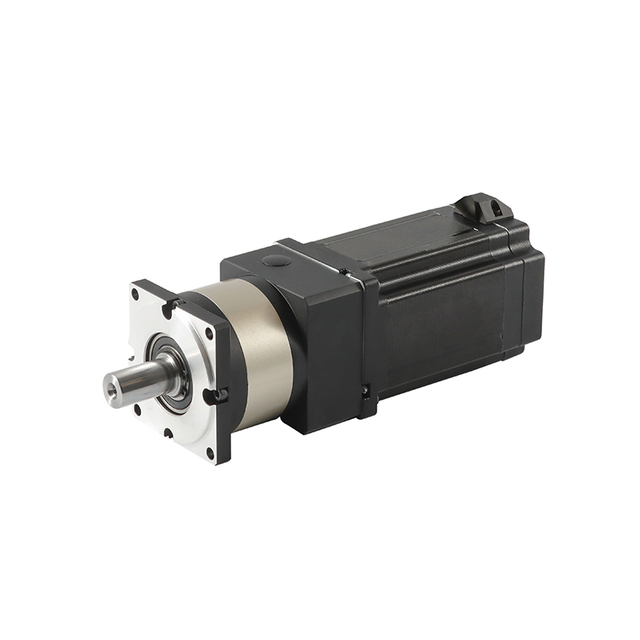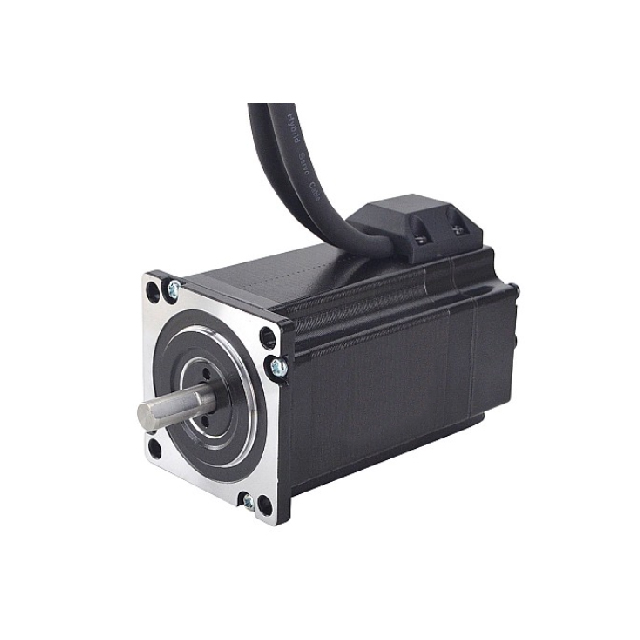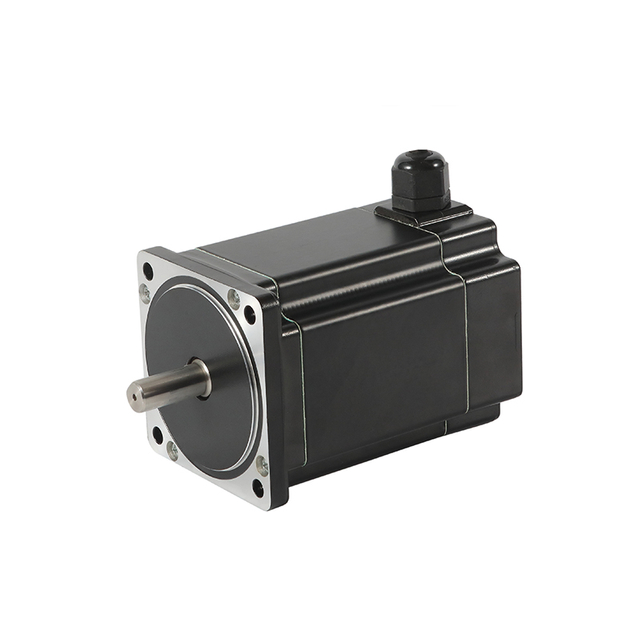
Stepper motors are widely used in automation, robotics, and precision control systems for their ability to move in discrete steps and provide accurate positioning. However, a common question arises among beginners and hobbyists: Can a stepper motor be used without a driver? The simple answer is no, not effectively. In this article, we will explain in depth why a driver is essential, what happens if you try to operate a stepper motor without one, and what alternatives or manual methods exist.
Understanding the Function of a Stepper Motor
A stepper motor is an electromechanical device that converts electrical pulses into precise mechanical movement. Unlike conventional DC or AC motors, which rotate continuously when powered, a stepper motor moves in fixed angular increments known as steps. Each electrical pulse sent to the motor corresponds to one step of rotation, allowing it to accurately control position, speed, and direction without the need for feedback systems.
Inside the stepper motor, there are two main components: the stator (stationary part) and the rotor (rotating part). The stator contains multiple electromagnetic coils arranged in phases, while the rotor is typically made of a permanent magnet or soft iron. When current is applied to a specific coil, it generates a magnetic field that attracts or repels the rotor's magnetic poles, causing it to move to the next step position.
By energizing the coils in a specific sequence, the rotor advances in discrete steps, which can range from 1.8° per step (200 steps per revolution) to even smaller microsteps when using advanced drivers. This stepwise operation allows stepper motors to achieve precise positioning and repeatable movement without external sensors.
Stepper motors are commonly used in 3D printers, CNC machines, camera sliders, and robotics, where controlled motion is essential. Their ability to hold a fixed position when stopped (known as holding torque) makes them ideal for applications requiring stability and accuracy.
What Does a Stepper Motor Driver Do?
A stepper motor driver is an essential electronic component that controls how a stepper motor operates. It acts as a bridge between the control system (such as a microcontroller, PLC, or computer) and the motor itself, ensuring that electrical power is delivered to the motor coils in the correct sequence and at the right time.
The primary function of a stepper driver is to translate low-power control signals into high-power electrical pulses that can drive the motor's windings. Since stepper motors typically require much higher current and voltage than what microcontrollers can provide, the driver takes over this role safely and efficiently.
Here are the key functions of a stepper motor driver:
Pulse and Direction Control:
The driver receives simple signals—usually a “step” pulse and a “direction” input—from a controller. Each pulse moves the motor one step forward or backward, depending on the direction signal. This allows for precise control over position and speed.
Current Regulation:
Stepper motors draw significant current through their coils. A driver uses techniques like chopper current control to regulate this current, preventing overheating and ensuring smooth operation. It adjusts the current dynamically to match the motor's needs.
Microstepping:
Advanced drivers divide each full step into smaller microsteps, such as 1/2, 1/4, 1/8, or even 1/256 of a step. Microstepping provides smoother motion, higher precision, and reduced vibration, making it ideal for applications that demand accuracy.
Protection Features:
Quality stepper drivers include protection against overvoltage, overcurrent, and short circuits, safeguarding both the motor and the control electronics from damage.
Efficient Power Conversion:
The driver optimizes power delivery to the motor, ensuring high torque output while minimizing heat and energy loss.
In simple terms, a stepper motor driver ensures that the right amount of current flows through the right coil at the right time. Without it, the motor cannot perform its precise step-by-step motion effectively. The driver makes it possible to achieve controlled movement, accurate positioning, and reliable performance—whether in industrial automation, robotics, or hobbyist projects.
Can a Stepper Motor Run Without a Driver?
Technically, a stepper motor can move without a driver, but in practical and safe applications, the answer is no—you should not run a stepper motor without a driver. The driver is a crucial component that controls how power is delivered to the motor's coils, and operating without it can lead to poor performance, unstable movement, or even permanent damage to both the motor and control electronics.
Here's why a driver is essential and what happens when you try to operate a stepper motor without one:
1. Insufficient Power Control
A microcontroller, such as an Arduino or Raspberry Pi, cannot supply the high current and voltage required by a stepper motor. Most microcontroller pins can only deliver a few milliamps, while stepper motors typically require 1 to 5 amps per phase.
Without a driver to handle this load, the motor will either fail to move or cause damage to the microcontroller due to excessive current draw.
2. Complex Coil Sequencing
A stepper motor's operation depends on energizing its coils in a specific sequence. Each phase must be activated in precise order and timing to rotate the motor smoothly. Without a driver, you would need to manually generate this sequence using transistors or relays—a difficult and unreliable process that requires complex coding and exact timing control.
3. No Current Regulation
Stepper drivers include built-in current limiting to protect the motor and control electronics. Without this regulation, the motor coils can easily draw too much current, leading to overheating, demagnetization of the rotor, or even a burnt-out motor.
4. Poor Performance and Instability
Without a driver, the stepper motor will not run smoothly. It may vibrate, stall, or skip steps, resulting in inaccurate positioning. Speed and torque control will also be inconsistent, making it unsuitable for any precise or automated task.
5. Risk of Permanent Damage
Directly powering a stepper motor from a power source or control pin is dangerous. The lack of current control and protection can cause short circuits, burnt windings, or damage to electronic components connected to the system.
Experimental Exceptions (Not Recommended for Practical Use)
For educational or testing purposes, it's possible to make a stepper motor move without a proper driver using simple transistor circuits or an H-Bridge (like L293D or L298N). However, these setups are limited in performance and only suitable for low-current motors. They cannot provide the smooth motion, torque control, or efficiency that a proper driver offers.
Conclusion
While you may be able to make a stepper motor turn without a driver, it will not perform correctly or safely. The driver is essential for precise control, efficient power delivery, and system protection. If you want to use a stepper motor effectively—whether in robotics, CNC machines, or automation systems—always use a dedicated stepper motor driver designed for your motor's specifications.
Manual Control Methods (Without Dedicated Drivers)
For educational or experimental purposes, it's possible to operate a stepper motor manually using transistors, MOSFETs, or H-bridge circuits. This method allows you to simulate the function of a driver at a basic level. Below are a few ways to do this:
1. Using Transistors or MOSFETs
Each coil of the stepper motor can be switched on and off through a transistor or MOSFET controlled by a microcontroller. You'll need:
One switching transistor per coil.
Flyback diodes to protect against voltage spikes.
External power supply matching the motor's rated voltage.
This setup allows limited manual control, but timing and sequence logic must be handled by software. Without precise timing, the motor will jitter or lose steps.
2. Using an H-Bridge Circuit
An H-Bridge can control the current direction through each coil, making it suitable for bipolar stepper motors. You can use ICs like L293D or L298N, which can handle small stepper motors. However, these are still considered basic drivers and are not efficient for high-performance applications.
3. Using Relays (Not Recommended)
In theory, relays can be used to switch coil connections, but their mechanical nature makes them too slow and unreliable for stepper operation. This method is purely educational and not practical for real applications.
Why a Dedicated Stepper Driver Is the Best Option
Using a dedicated driver like the A4988, DRV8825, or TMC2209 offers significant advantages:
Smooth and Silent Motion: Advanced drivers support microstepping up to 1/256 steps, reducing vibration and noise.
High Efficiency: Drivers control current dynamically, ensuring optimal torque output.
Ease of Integration: Most drivers interface easily with Arduino, Raspberry Pi, or PLC systems using simple step and direction pins.
Protection Mechanisms: Built-in safety features protect both the motor and controller from damage.
In professional or industrial settings, it's non-negotiable to use a proper driver. It ensures reliable, accurate, and long-lasting performance of your stepper system.
Consequences of Running a Stepper Motor Without a Driver
Running a stepper motor without a driver may seem like a shortcut for simple projects or testing, but it can lead to serious electrical and mechanical problems. The driver is responsible for managing current flow, controlling step timing, and protecting both the motor and control circuitry. Without it, the entire system becomes unstable and unsafe. Below are the major consequences of operating a stepper motor without a driver.
1. Overheating and Coil Damage
Stepper motors require precise current regulation to operate safely. Without a driver, there is no mechanism to control the amount of current flowing through the coils. As a result, the motor can overheat rapidly, causing insulation breakdown or even burning of the windings. Once the insulation melts, the coils short-circuit internally, rendering the motor permanently damaged.
2. Insufficient Torque and Step Loss
Without a proper driver, the motor coils do not receive the correct voltage and current at the right time. This leads to weak magnetic fields, causing the motor to lose torque. When torque drops below the required load torque, the motor begins to skip steps or stop rotating altogether. This results in positioning errors, making the motor unreliable for precision control.
3. Electrical Overload on the Controller
Microcontrollers such as Arduino, Raspberry Pi, or PLCs are not designed to power motors directly. Their output pins typically handle currents in the range of 20–40 mA, while a stepper motor may need 1000–3000 mA per phase. Connecting the motor directly to the controller can cause instant damage to the microcontroller pins or burn out internal circuits.
4. Irregular and Unstable Motion
Stepper motors depend on the accurate sequencing of coil energization to move smoothly. Without a driver generating these precise signals, the motor will experience jerky, uneven, or unpredictable motion. The motor may vibrate, oscillate, or even rotate in the wrong direction, especially at higher speeds.
5. Increased Electrical Noise and Vibration
Improper power delivery to the motor coils creates electrical noise and mechanical vibration. This not only affects the motor's performance but can also interfere with nearby electronic components. Continuous vibration may loosen mechanical connections and reduce the motor's lifespan.
6. Lack of Protection Mechanisms
Stepper motor drivers include safety features such as overcurrent protection, thermal shutdown, and short-circuit prevention. Without these protections, even a minor wiring mistake or voltage surge can cause catastrophic damage to the motor and the entire control circuit. The absence of these built-in protections makes the system vulnerable and unreliable.
7. Permanent Motor Failure
If a stepper motor runs for too long without a driver, the excessive current and heat can cause demagnetization of the rotor magnets or mechanical deformation inside the motor. These forms of damage are irreversible and will severely degrade motor performance—or render it completely unusable.
Conclusion
Running a stepper motor without a driver is risky, inefficient, and ultimately destructive. The driver is not just an accessory—it's a critical control and protection component that ensures the motor receives the correct voltage, current, and timing signals. Without it, you face issues like overheating, low torque, unstable movement, and hardware failure.
To guarantee safe, reliable, and precise operation, always use a dedicated stepper motor driver that matches your motor's specifications. It protects both your electronics and your investment, while delivering smooth, accurate motion control every time.
Choosing the Right Stepper Driver
Selecting the right driver depends on the motor's current rating, voltage, and application requirements. Below are a few guidelines:
For small stepper motors (≤2A), use A4988 or DRV8825.
For medium motors (2A–4A), consider TB6600 or DM542.
For high-torque industrial motors, use digital stepper drivers with advanced current control.
Always ensure your driver's current limit matches or slightly exceeds the motor's rated current. Using too low a current reduces torque; too high risks overheating.
Conclusion: Always Use a Driver for Reliable Performance
In conclusion, while it might be tempting to run a stepper motor without a driver, it's neither practical nor safe. The driver serves as the heart of the control system, managing current, timing, and phase sequencing to ensure precise, reliable motion. Without it, you risk damage to both your motor and controller.
For anyone serious about achieving smooth, accurate, and efficient motion control, investing in a proper stepper driver is not optional—it's essential.
English
العربية
Français
Русский
Español
Português
Deutsch
italiano
日本語
한국어
Nederlands
Tiếng Việt
ไทย
Polski
Türkçe
ພາສາລາວ
ភាសាខ្មែរ
Bahasa Melayu
ဗမာစာ
Filipino
Bahasa Indonesia
magyar
Română
Čeština
Монгол
қазақ
Српски
हिन्दी
فارسی
Slovenčina
Slovenščina
Norsk
Svenska
українська
Ελληνικά
Suomi
Հայերեն
עברית
Latine
Dansk
Shqip
বাংলা
Hrvatski
Afrikaans
Gaeilge
Eesti keel
Oʻzbekcha
latviešu
Azərbaycan dili
Български
Català








